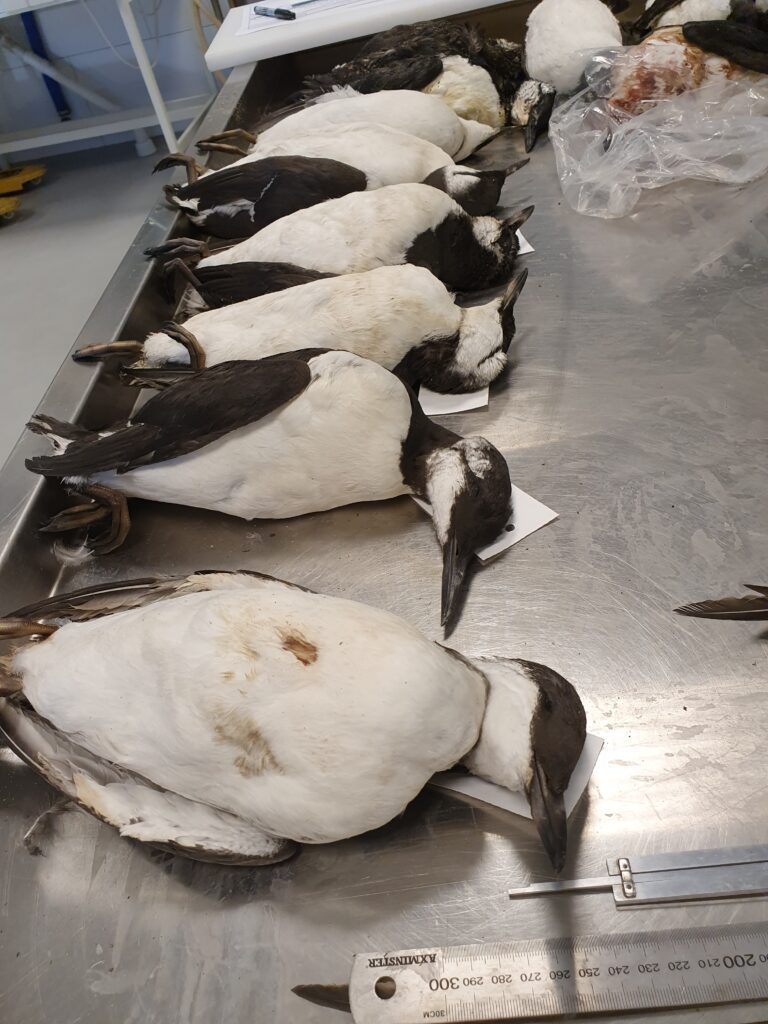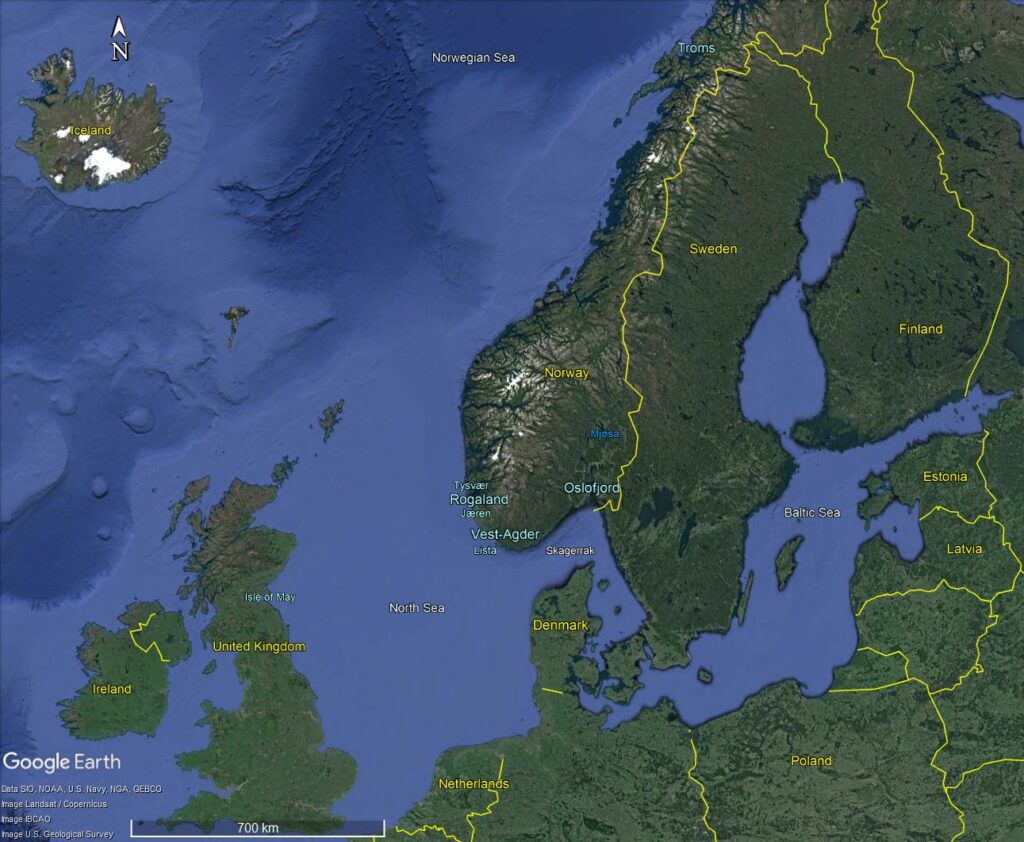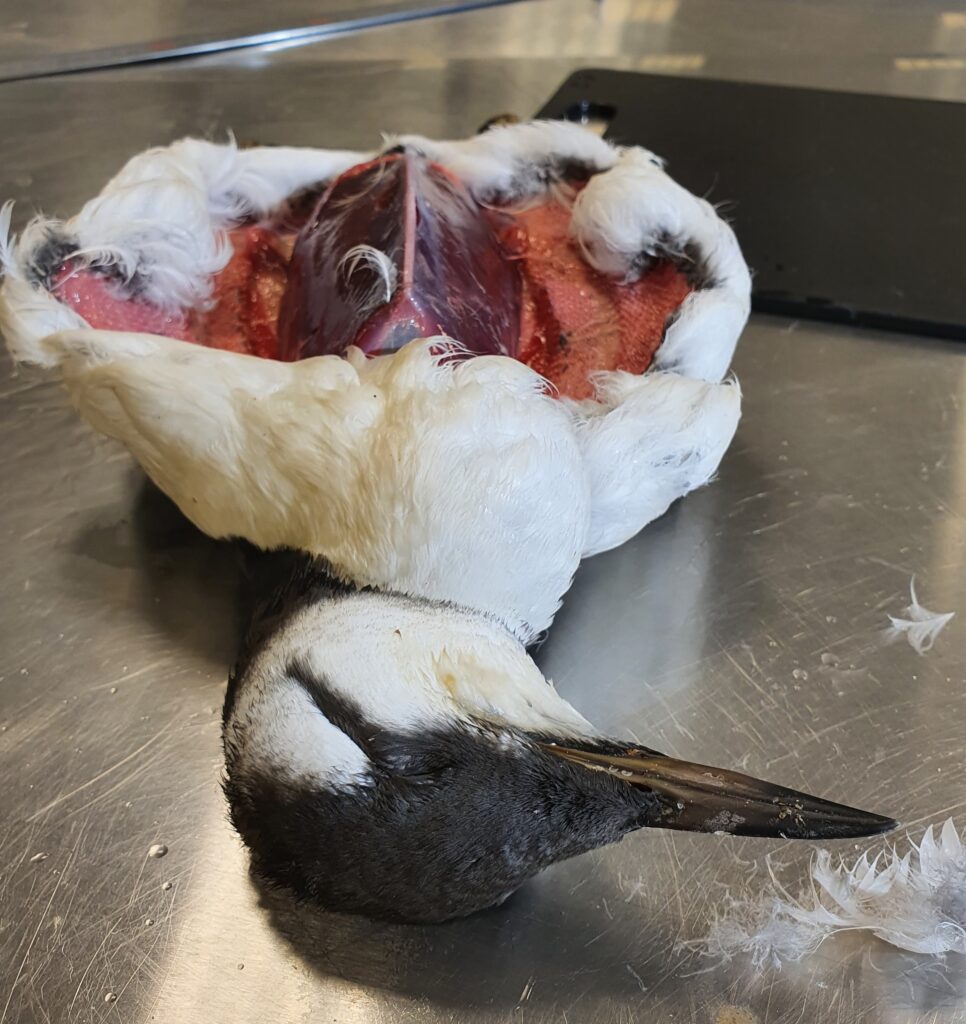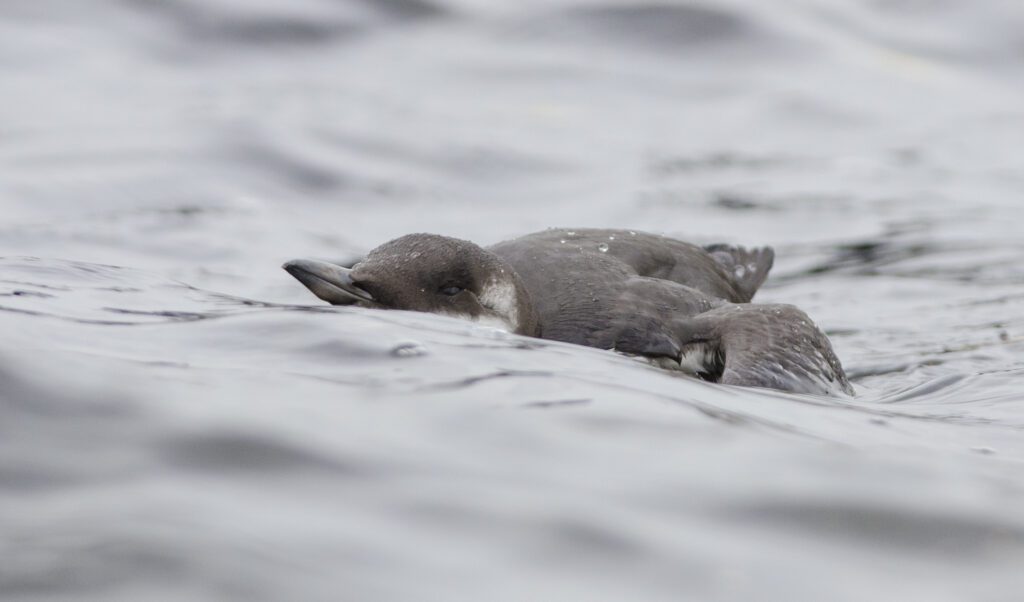Auk wreck last autumn struck mainly young common guillemots
In the autumn of 2021, a large number of common guillemots Uria aalge was found dead in the Oslofjord. When so many individuals of a critically endangered seabird species die just a few blocks from the Parliament building, extra attention is drawn and concern raised. The first results of the investigation of the incident show that the dead birds found in Norway were primarily young, starving common guillemots, but the incident was larger than first thought.
First discovered in the UK
Observations of a large number of dead and dying auks, especially common guillemots, were reported along the coasts bordering the North Sea and Skagerrak in the autumn of 2021. Sightings of dead seabirds are not unusual, especially in heavily populated areas, but on this occasion, the extent and length of the incident turned out to be unusually large. It started already in the end of August, when the first dead guillemots stranded on the east coast of Great Britain. In the beginning of October, the first guillemots stranded in Rogaland, Norway and, within a short time, the phenomenon had spread east to the Skagerrak area. In Norway, most of the dead birds were found in the inner part of Oslofjord in late October and early November, with many guillemots ending up on shore in the capital itself. There have also been reports of more than 100 guillemots swimming around on the inland lake Mjøsa, 140 km from the coast. An unusually high number of dead birds was also found in the Netherlands, Belgium and on the west coasts of Sweden and Denmark.
Reaction group for mass mortality incidents
Mass mortalities of seabirds occur sporadically, and many such incidents probably pass unnoticed. They normally occur in the winter when most seabirds have migrated far from the breeding areas, with many species far out at sea. At a time when seabirds are among the most threatened animals on our planet and when two thirds of all seabird species in Norwegian waters are red-listed, it is very important to determine what causes such mass mortalities. As a result, Norwegian authorities, in cooperation with the SEAPOP programme, have established a reaction group to investigate such incidents in detail when they occur. This has enabled us to follow up on several major incidents on the Norwegian coast in recent years, such as a mass mortality of Atlantic puffins in Vest-Agder and Rogaland in 2016, of gulls in Troms in 2017 and 2018 and of eiders in the Oslofjord in 2020.
Sampling collaboration
When a mass mortality strikes, it is important to establish which species are affected and in what numbers, determine the cause of death and the birds’ condition, gender and age composition, as well as to identify from which breeding areas they originate. These factors are essential in order to assess which populations were in the area, which age-groups were most affected and, ultimately, what effect the incident may have on the populations. Thanks to a successful collaboration with employees at Oslo and Tysvær municipalities, the Natural History Museum in Oslo, the Norwegian Nature Inspectorate and many volunteers, a systematic registration and collection was initiated as soon as the first dead birds were seen. Approximately 200 dead common guillemots, along with a few razorbills, little auks and Atlantic puffins, were collected at Tysvær, Jæren, Lista and in the Oslofjord. With financial support from the Norwegian Environment Agency, the birds were analysed at NINA in Trondheim.
Starvation probably the main cause
The results show that the analysed birds were critically emaciated. They had no measurable fat and they weighed around half of their normal body weight. They were, in other words, in very poor condition. Early in the study, five common guillemots were sent to the Veterinary Institute to determine if bird flu or other pathogens could have caused the mass mortality, but no signs of disease were found. Food shortage is thus considered to be the primary cause of death. All the birds that were examined were young birds, most of them entering their first winter. It is still too early to estimate how much of the production was lost. Among the birds investigated in Great Britain and the Netherlands were also some adult birds, especially males. In common guillemots, the fathers take care of the young birds during the first period at sea after they leave the colony, and both males and young birds can be vulnerable at this stage.
British juveniles affected the most
Ringing data and tracking data from common guillemots equipped with geolocation sensors in previous years indicate that primarily British common guillemots overwinter in the North Sea. We therefore suspect that the majority of the dead guillemots found along the Norwegian coast in the autumn of 2021 originated from British colonies. This suspicion is supported by the recovery of three ringed birds, all ringed as fledglings on the east coast of Scotland in the late summer of 2021.
Starvation leads to desperation
In periods of strong southwesterly winds, it is not unusual for large numbers of auks to enter Oslofjord. However, the large numbers of dead and dying birds in the fjord last autumn suggest that the birds were weakened by a food shortage in the North Sea before they were driven towards the Norwegian coast. When in such a state, birds often appear in the centre of Oslo and on inland lakes, possibly in a desperate search for food.
Causalities are often complex
Autopsies and sampling from the common guillemots have secured data and material that can be used to explain whether specific happenings can have caused this mortality incident and thereby reveal important connections to conditions in the marine ecosystem. Food shortages, storms, diseases and toxins – or a combination of any of these factors – have been shown to trigger mass mortality in seabirds. If, for example, there is a lack of prey fish at sea, the auks may become weakened by starvation. We still don’t know the exact cause of the food shortage in this incident. We do, however, know that both climate change and the harvest of marine resources may alter the distribution and availability of important fish populations, and that extreme weather events may impede access to prey items for the birds.
International collaboration on analyses
The incident in Norwegian waters must be seen in relation with what now appears to be an unusually extensive incident of mass mortality of common guillemots that affected almost the whole distribution area of the species in the North Sea. A collaboration has been established with colleagues in the other countries bordering the North Sea, and data have been collected in order to map how this incident developed over time on a larger scale, and to test different hypotheses about what caused the mass mortality. These efforts can, hopefully, contribute to determine the most important causal mechanisms behind such incidents and identify any needs for management actions as early as possible.

Photo © Signe Christensen-Dalsgaard

Source: Google

Photo © Signe Christensen-Dalsgaard

Photo © KJELL ISAKSEN
Contact person: Signe Christensen-Dalsgaard, NINA